Cacti may look like rough-edged desert survivors that don’t have much beauty to offer. But when these tough plants bloom, they show a stunning, delicate beauty that goes against what you might expect. Come with me as we talk about the strange way flowers grow on cacti and why this happens so often and excites botany fans.
I’ve always found cacti fascinating. As a gardener and nature lover for a long time, I’m drawn to plants that have unique features, like the cactus’s thick, water-retaining stems and sharp spines that protect it. But I had no idea that these tough succulents would have a soft side with beautiful, bright flowers.
The first time I witnessed a flower unfurling from the top of a round barrel cactus, I was stopped in my tracks. The fuchsia petals contrasted dramatically with the cactus’s forest green epidermis. I had to know more about this incredible phenomenon.
It turns out that flowering is an important part of the reproduction process for most cactus species. Although cacti are often admired for their toughness and unusual looks, they flower for the same reason other plants do: to attract pollinators and make fruit and seeds possible.
When Do Cacti Bloom?
Flowering times vary amongst the diverse cactus family, which hails from arid regions across the Americas. Seasonal rainfall and temperatures influence blooming periods both in the wild and in cultivation. Most cacti flower in spring, summer or fall when conditions are ideal.
Here are flowering seasons for some popular cacti:
- Spring – Prickly pear, hedgehog, Easter lily cactus
- Summer – Golden barrel, torch, fishhook barrel
- Fall – Pineapple cactus, orchid cactus, Old Lady cactus
For any species, individuals may flower during slightly different times annually. Patience and observation are required to catch each unique cactus at its blooming peak.
What Do Cactus Flowers Look Like?
Flowers on cacti come in many colors, such as white, yellow, orange, pink, red, and purple. Shapes also vary a lot, from bell-shaped to tubular to funnel-shaped to disc-shaped and more.
Some cacti like the prickly pear produce showy, bowl-shaped blooms up to 6 inches wide. Meanwhile, the flowers of cacti in the Mammillaria family are diminutive, emerging like tiny pinwheels among dense spines.
Flowers may arise singly at the end of the stem or open in clusters called cephalia. Their transient beauty ranges from just a day up to two weeks in duration.
Where Do Flowers Grow on a Cactus?
Cactus flowers can sprout from several locations, depending on the species. The most common places are:
- Apex – At the very tip or top of the cactus
- Axils – In the angle between the stem and a branch
- Flowering zones – Specialized sections like cephalia
- Sides – Directly from the ribs of the cactus
Flowers growing straight from the main stem often leave tiny scars behind when they wither. Over time, rings of these flower scars can create a time record of the cactus’s blooming frequency.
Uncovering Why Cacti Produce Flowers
For cacti, flowering takes considerable energy and resources. So why bother? Flower production is key to their reproduction and genetic diversification.
As in other angiosperms, the main purpose of cactus flowers is to attract pollinators. Bees, birds, bats and other animals facilitate pollination when they visit multiple blooms searching for nectar.
Once pollinated, the flowers develop into edible fruits or pods packed with seeds. When dispersed, these seeds spawn new generations of cacti with unique genetic combinations.
Flowering also provides us dedicated cactus growers with a sign of health. Abundant blooms signal that our plants are thriving with the sunlight, water and nutrition needed for such output.
Cultivating Cactus Flowers at Home
If you want to encourage the flowers of a prized cactus to appear, some tips include:
-
Sun – Ensure it receives at least 4-6 hours of direct light daily. Insufficient sun often causes weak blooms or none at all.
-
Temperature – Some flowering is triggered by shifts in day/night temps. Try moving it to a cooler area at night.
-
Water – Hydration is key prior to blooming. Provide regular water leading up to the normal flowering period.
-
Fertilizer – Applying a balanced fertilizer in early spring primes the plant for good flower production.
-
Grooming – Remove spent flowers to focus energy on new blooms. Also prune damaged stems.
Patience and attentive care will be rewarded when you spot the first hints of color bursting forth on your formerly sparse cactus!
Admiring Cactus Flowers in All Their Glory
When I first witnessed an exotic cactus flower unfurling before my eyes, I was enthralled by nature’s ingenuity. How incredible that these tough desert dwellers can also produce such delicate beauty.
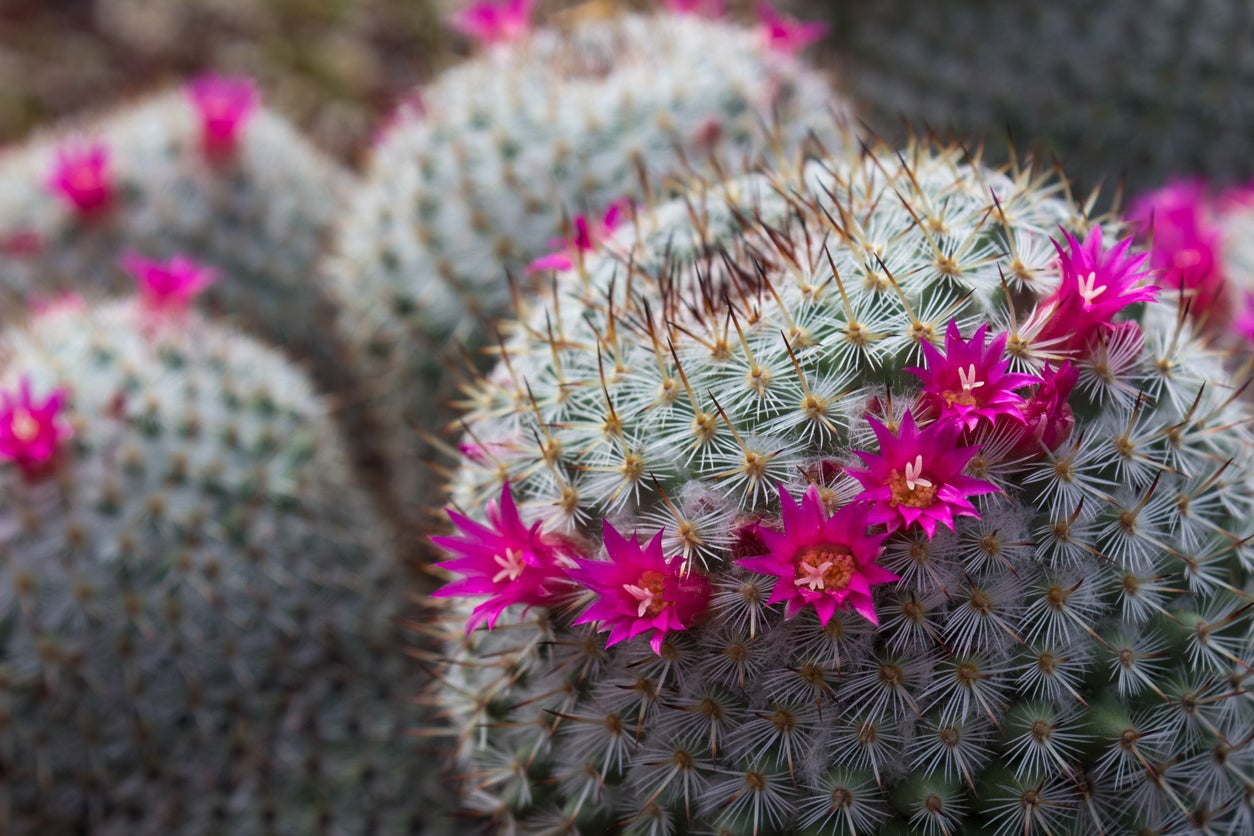
Why is my succulent growing a stalk?
Sometimes a long stalk is normal and part of the plant’s individual life cycle. In some cases, adjustment of sunlight, support, or trimming can help keep succulent growth compact if desired.
There are a few reasons why a succulent may start to grow a tall stalk or stem:
- Flowering: As part of their natural process of flowering and reproducing, many succulents grow tall flower stalks. This makes the flowers and seeds easier for pollinators to see and get to. This can be seen in a flowering “Century Plant,” also known as Agave americana.
- If a succulent doesn’t get enough sunlight, it may start to grow longer and stretch toward the light. This etiolation causes long, weak growth.
- Top heaviness: If the top of some succulents grows faster than the roots can support, the plant can become top heavy. The plant then sends up a stalk to make the top higher.
- Through hybridization, some hybrid succulents are more likely to grow long stalks because of their genes.
- Different kinds of succulents—Some succulents, like Kalanchoe, grow flowers on top of their long stems as they get older.
- When it gets cooler, some succulents start to stretch and lean toward heat sources like grow lights or sunlight.

Pups are miniature clones of the parent succulent that bud off at the base. You’ll see this a lot in Echeveria and Echeveria hybrids. Pups are kind of like babies for succulents and allow them to propagate naturally. If you see little succulent rosettes sprouting from the main plant, those are probably pups.
You might also like: Propagating Succulents 4 Ways: The Best Guide Ever
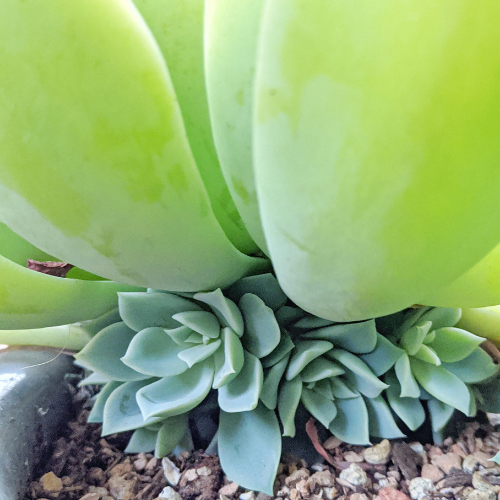
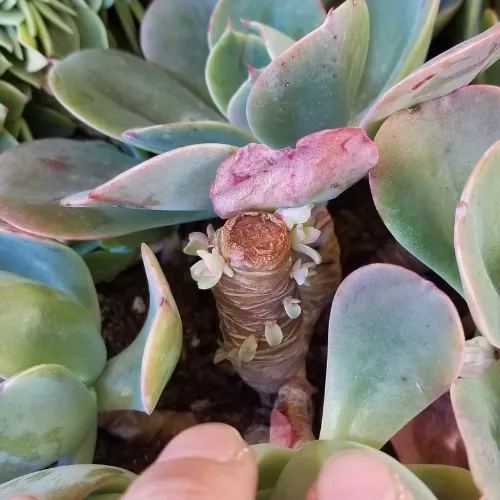
Long stems with roots that spread out along the soil’s surface are made by some succulents, like Echeveria prolifica. At the end of these stems, little plants grow. These are known as runners and allow the succulent to propagate itself through vegetative growth. Runners can take root anywhere along their length.
Click on the below to support a small business and add Echeveria prolifica to your succulent collection!
You might also like: Echeveria prolifica
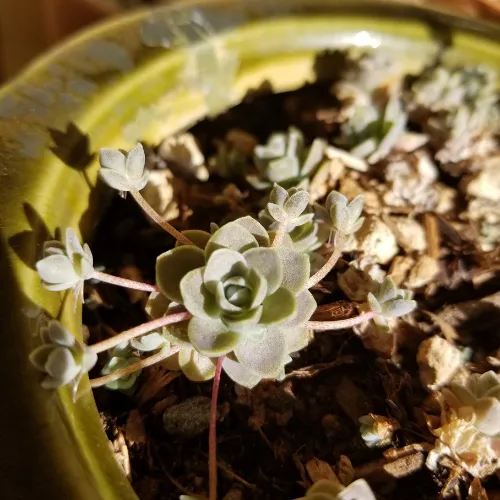
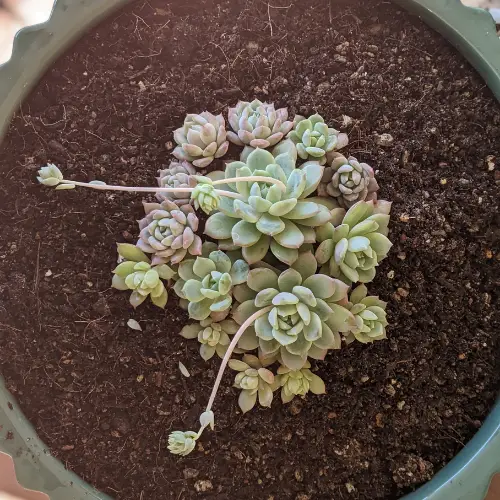
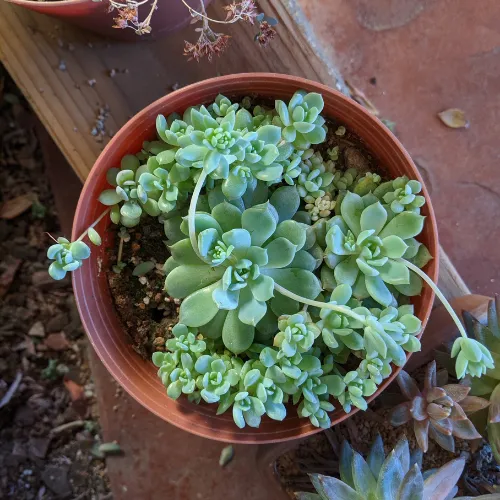
On Succulents – Why is my succulent growing a long stem with flowers?
Many succulents bloom with tall, spiny or strangely colored flower stalks. Some don’t even produce leaves on the stalks. Flower stalks give succulents a chance to reproduce sexually through pollen and seeds.

If you see a fluffy growth on one of your cacti, it’s about to flower!

The cactus below is about to flower and is also for sale on Etsy! Shop small!
Some flower stalks are considered death blooms which means the plant will die after flowering.
You might also like: The Resilient and Beautiful Aloe Brevifolia: A Low-Maintenance Succulent for Your Home
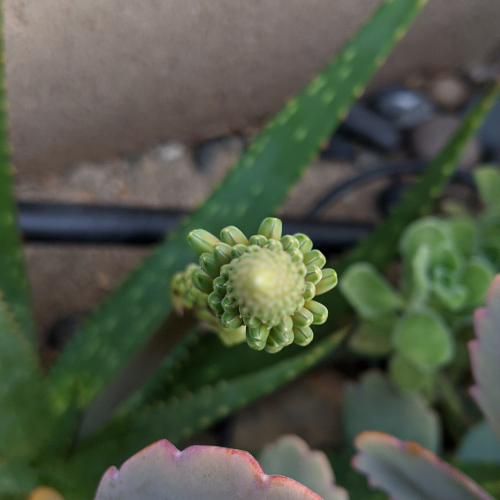
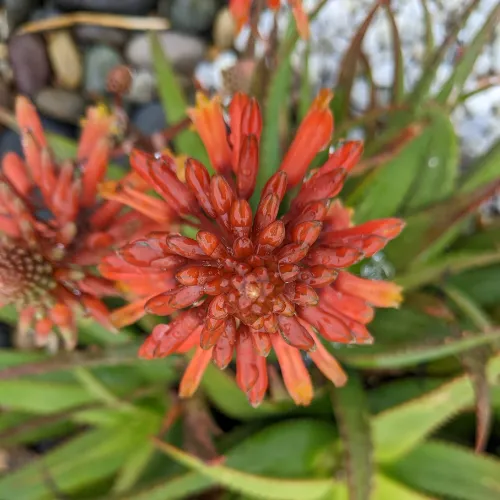
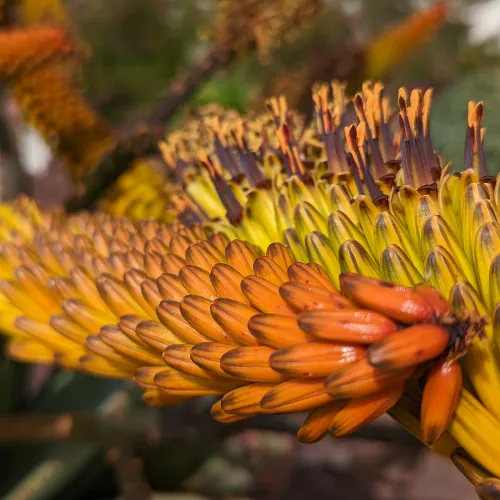
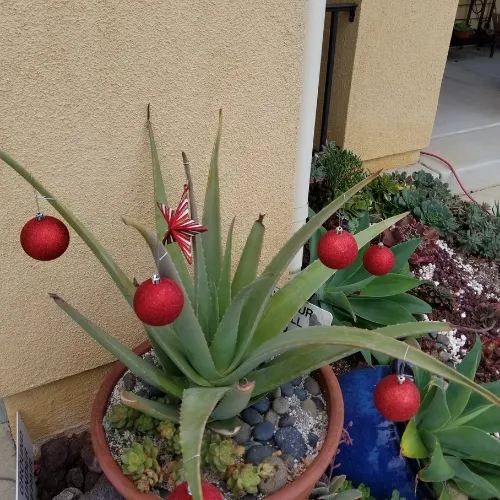
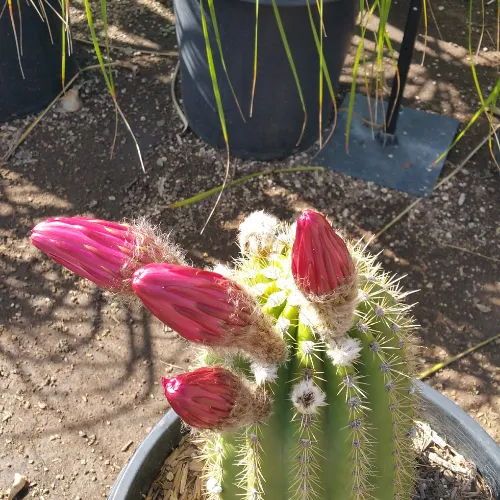
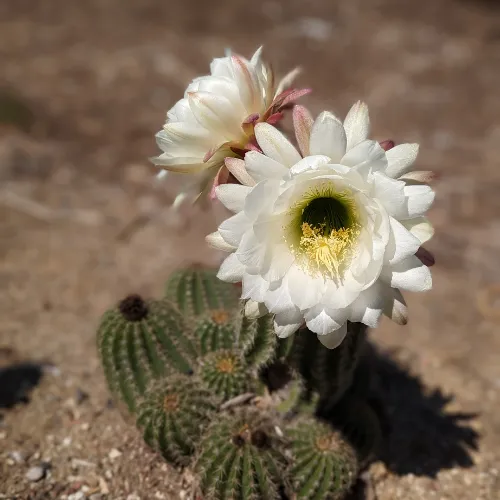

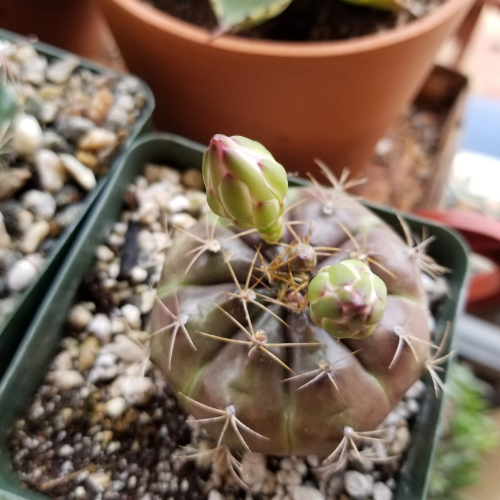
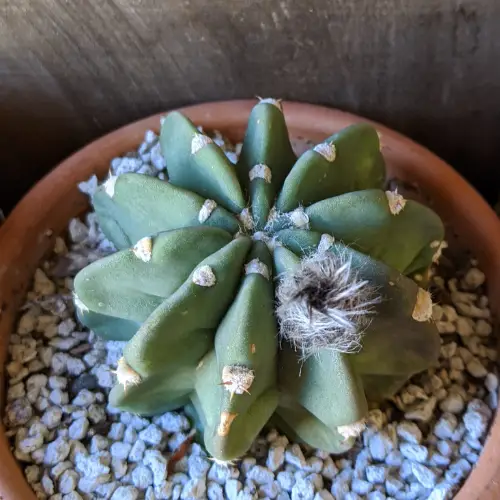

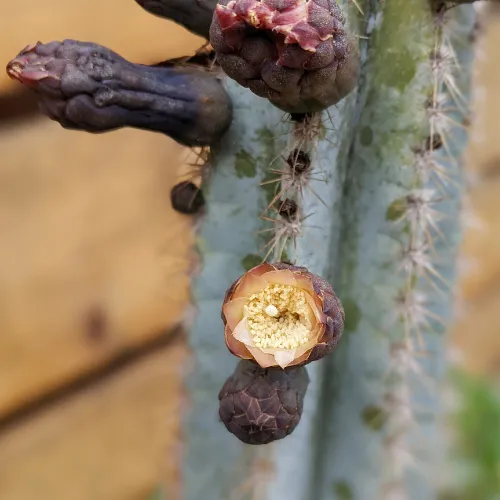
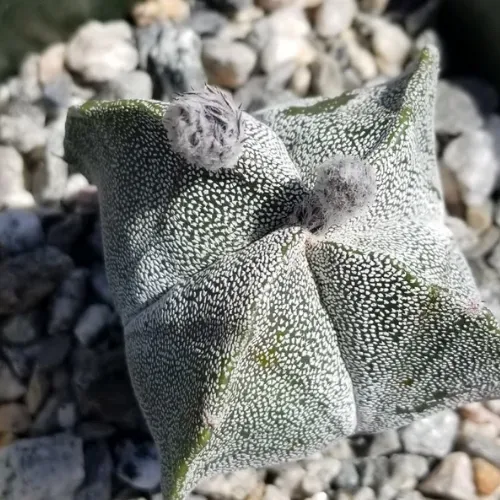

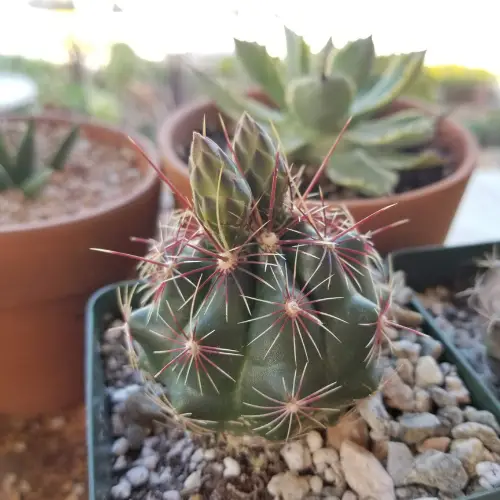
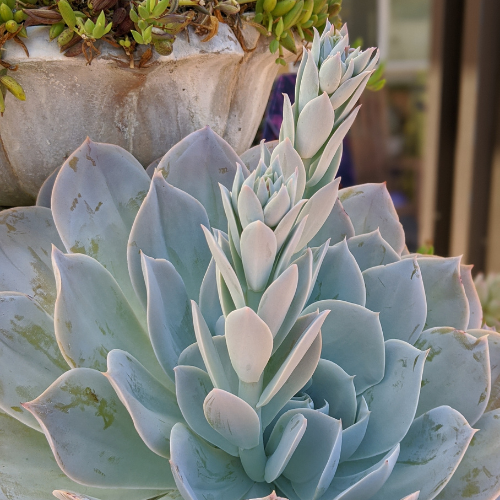

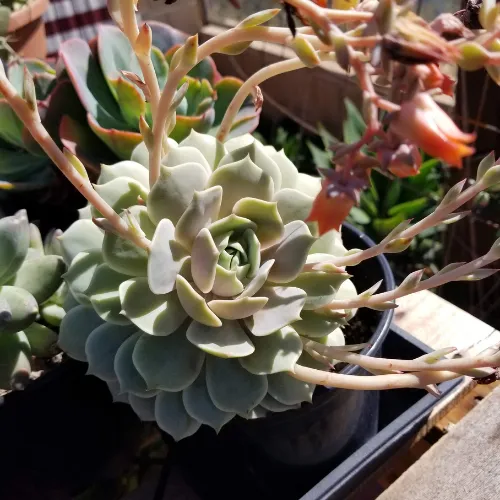
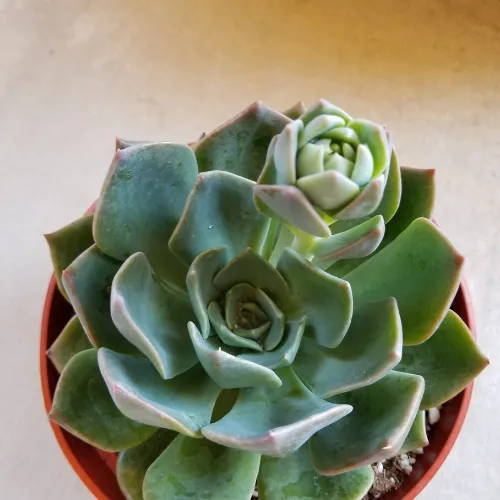
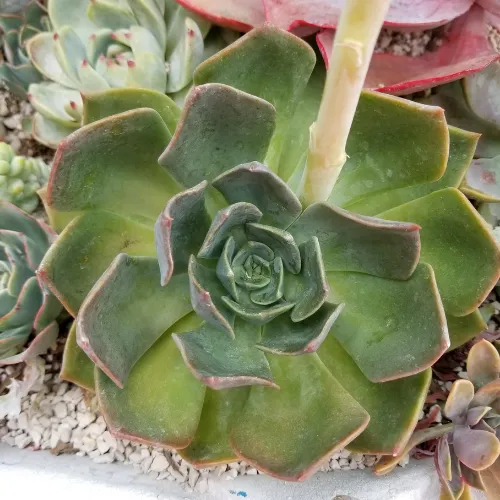
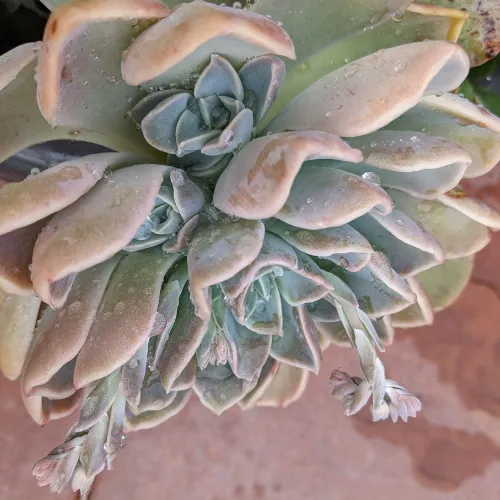
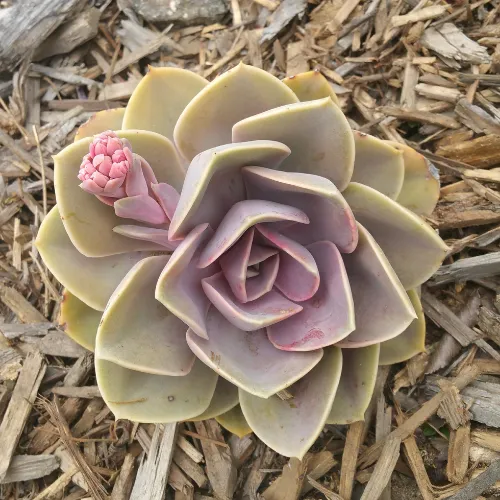
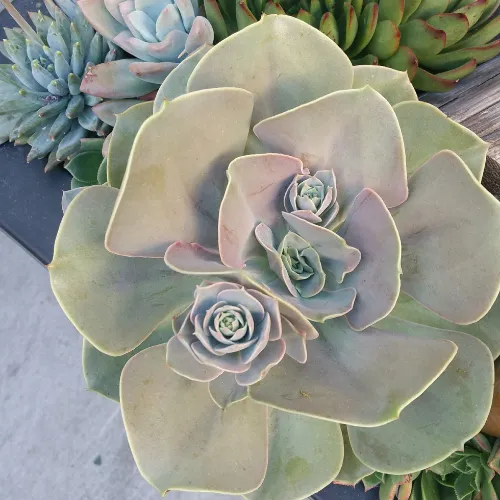
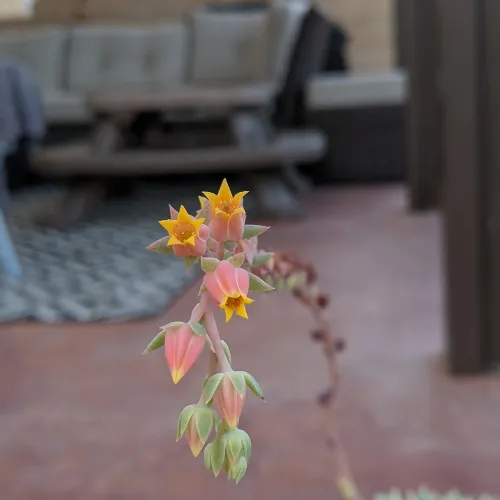
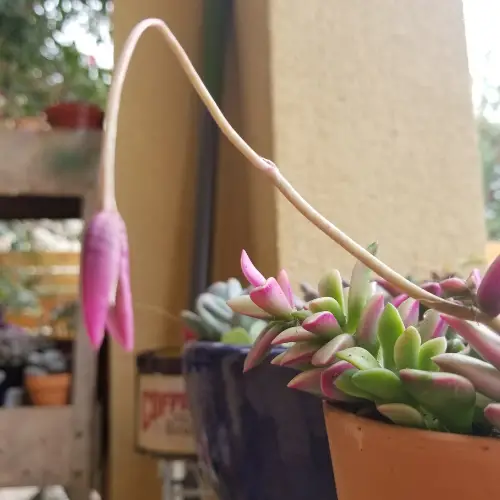
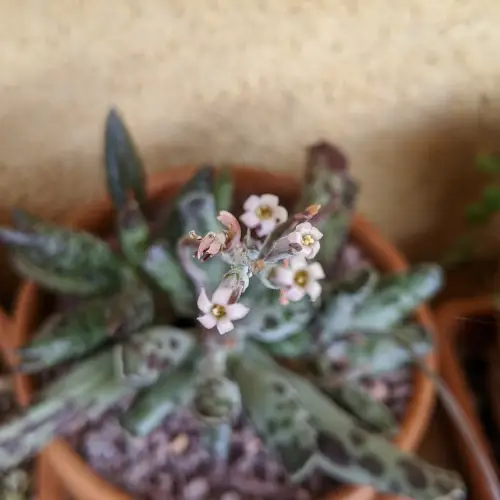
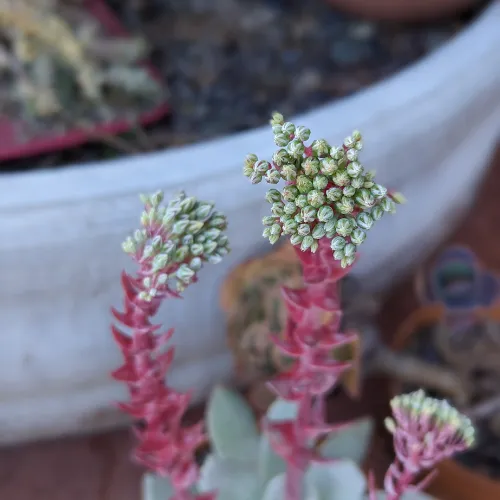
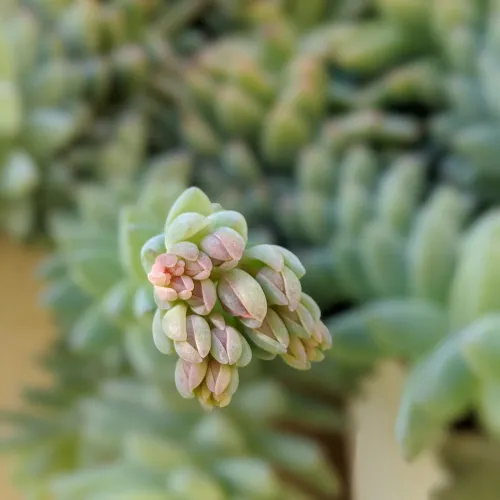

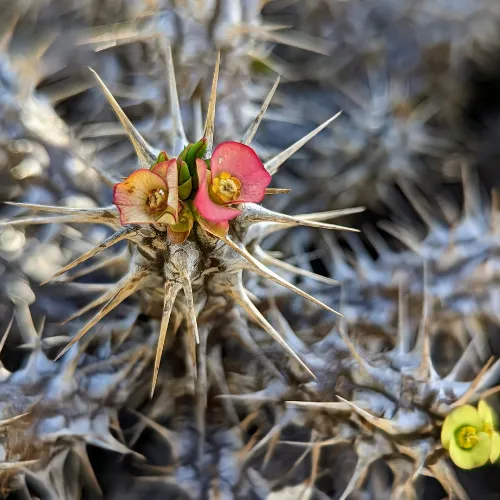
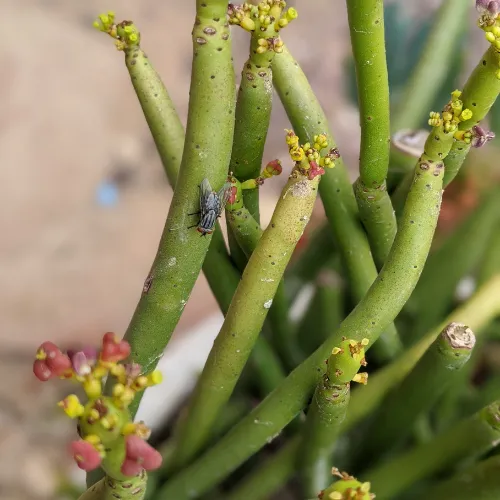
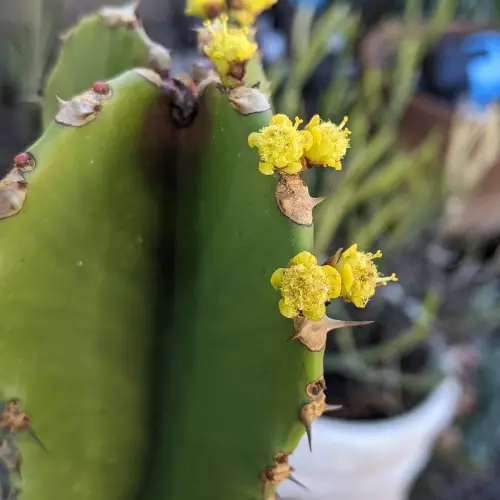
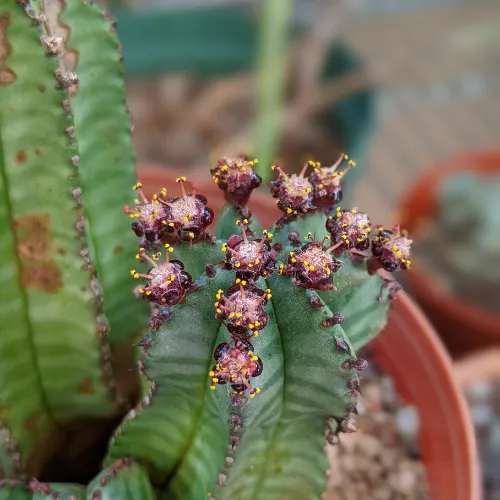
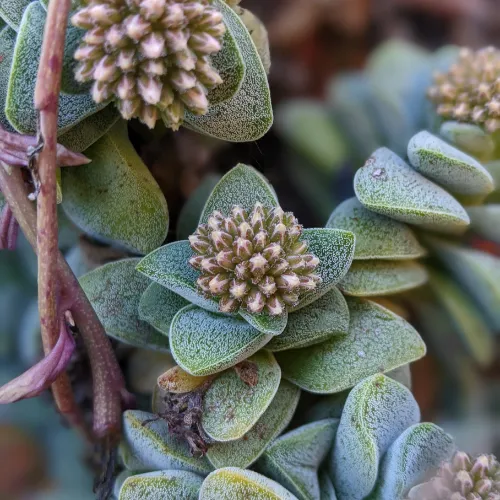
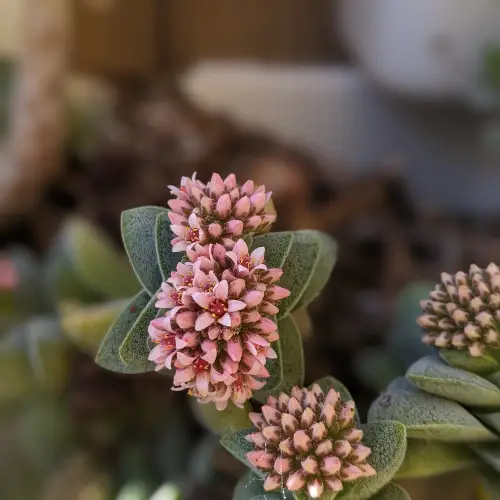
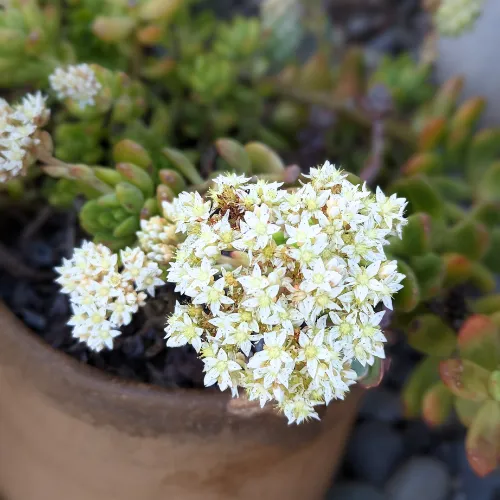
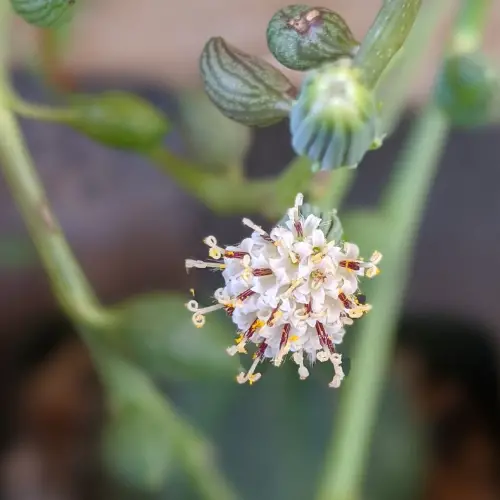
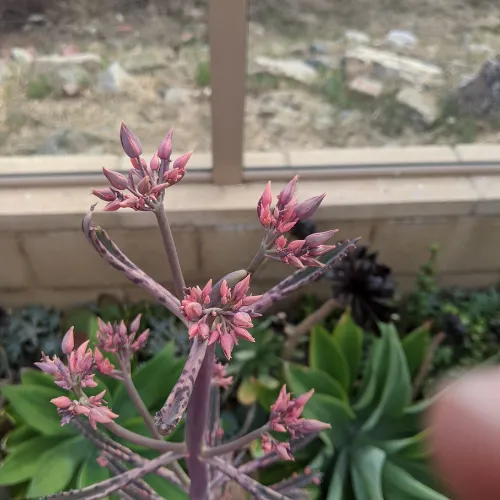
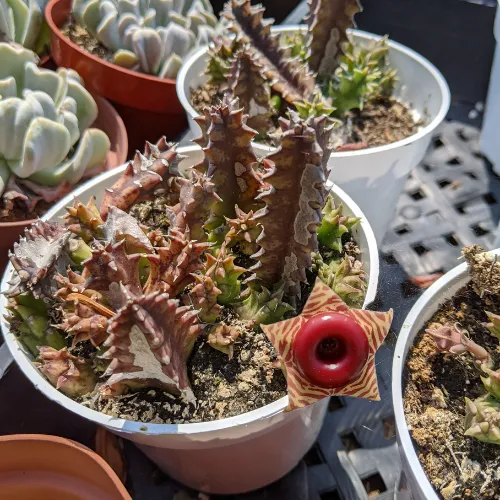
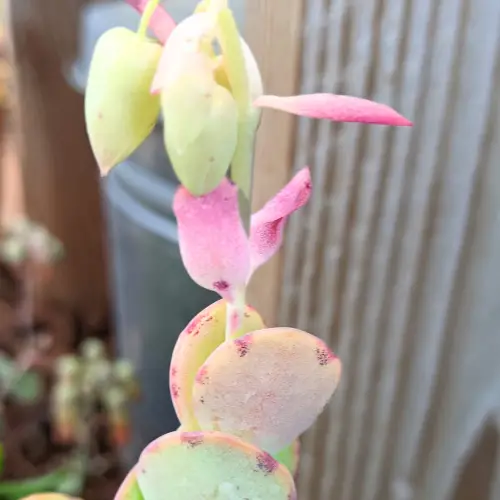
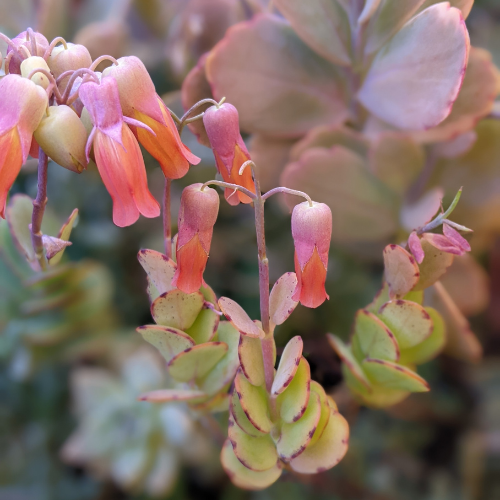
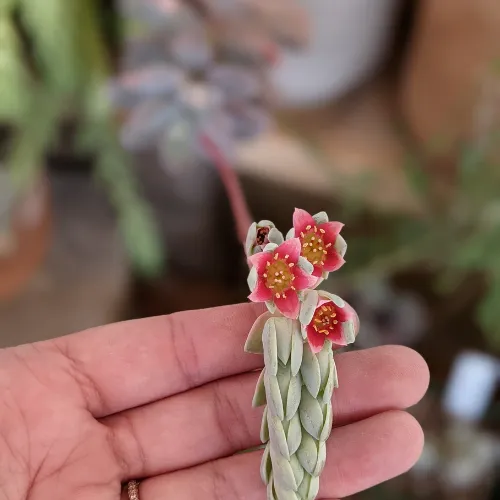
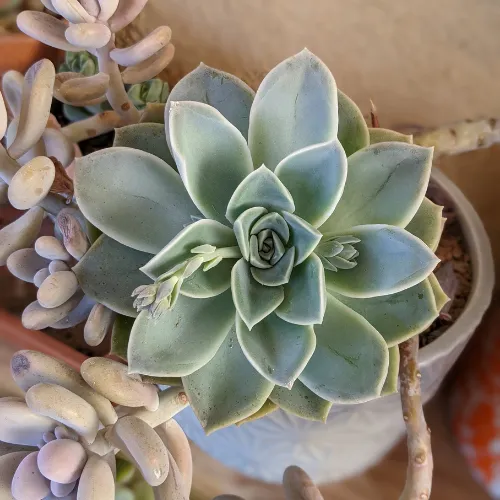
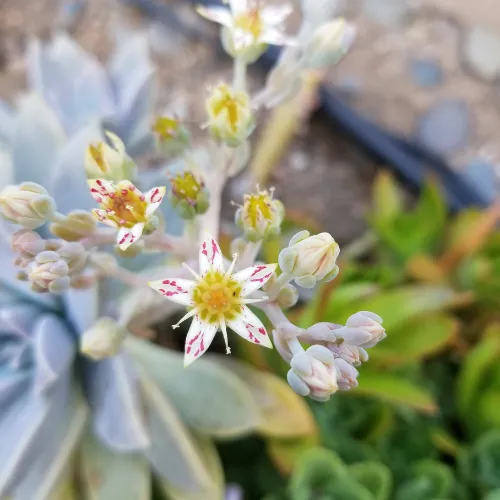

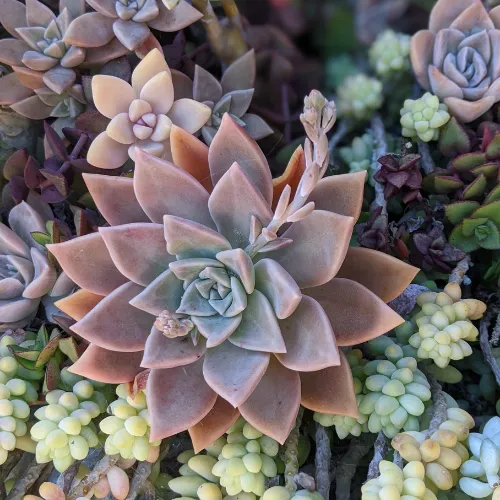
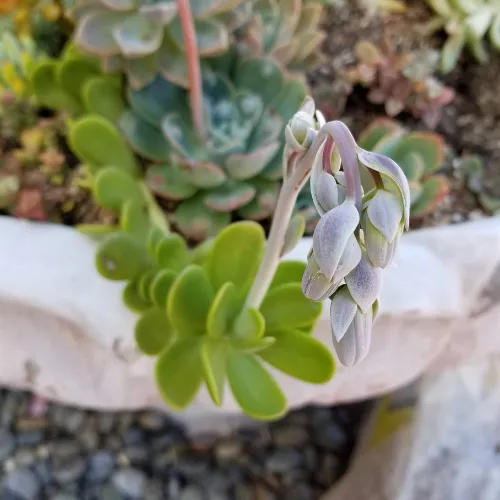
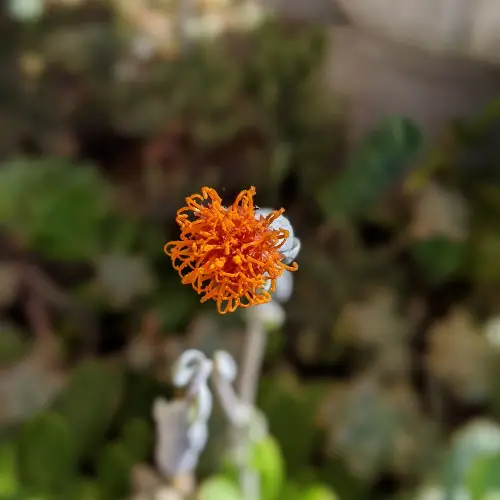
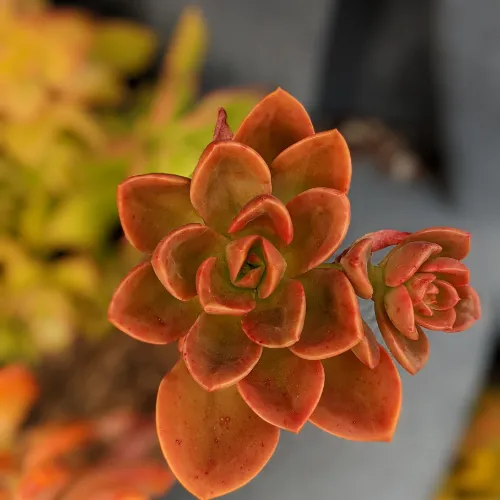
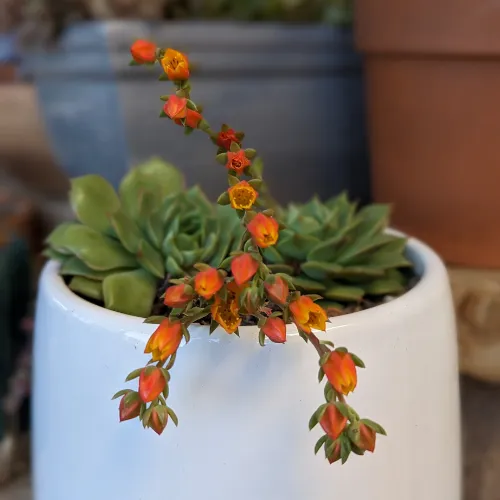
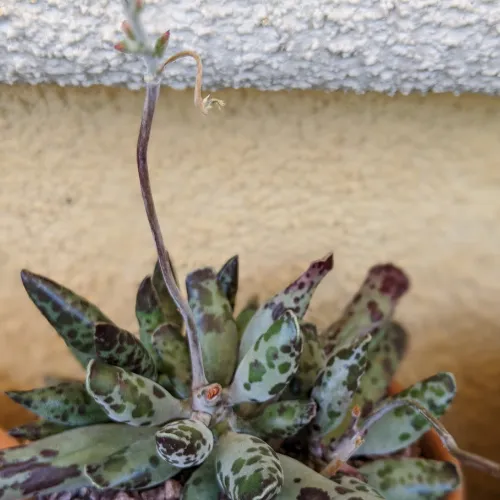
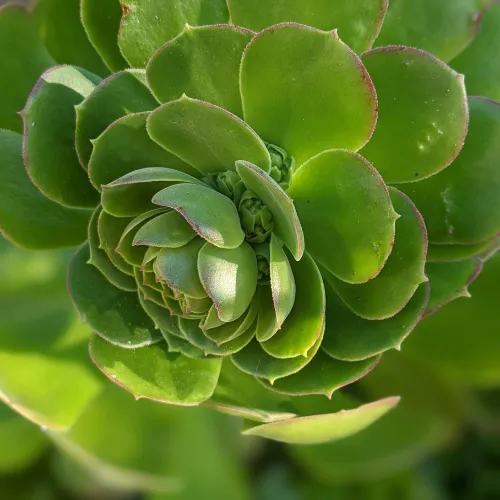
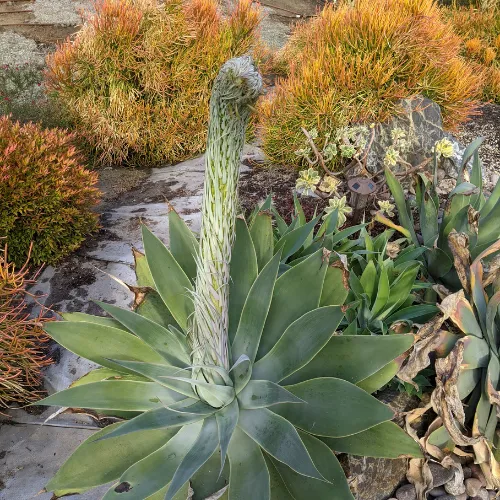
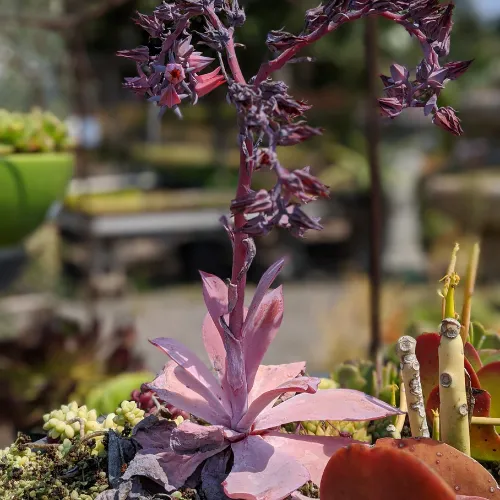
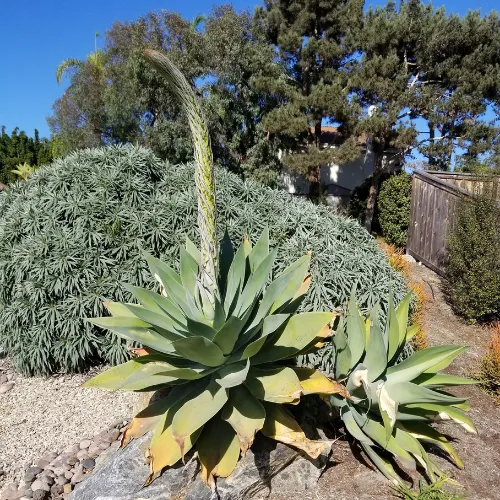
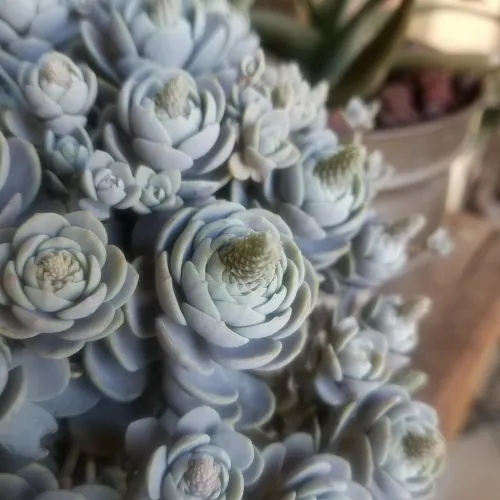


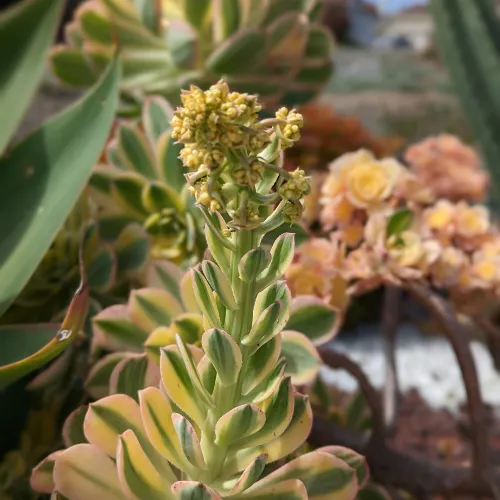
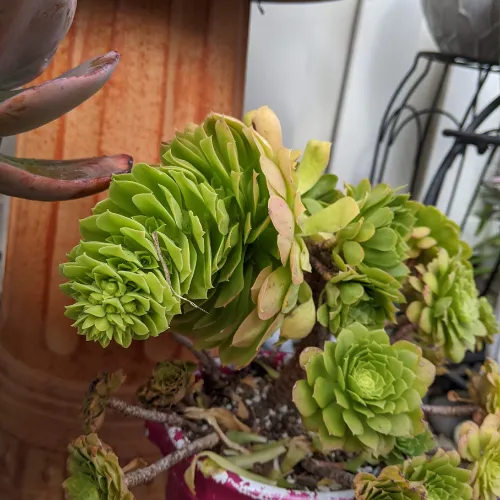
You might also like: Monocarpic Succulent Death Bloom: The Ultimate Guide to Growing and Caring for These Unique Plants and 4 Ways You Might Be Able to Save Yours.
How to Make Your Christmas Cactus Bloom! |Care and Propagation Tips!|
FAQ
Why is my cactus growing flowers?
Cacti produce flowers to reproduce sexually. Sexual reproduction is the way living organisms keep genetic diversity going in the population. Genetic diversity is important for adaptivity; if environmental conditions change, some members of a genet.
Should I remove pups from cactus?
Absolutely! Removing the pups from the maternal cactus to propagate individual progenies is an effective method of cactus propagation.
What is the growth coming out of my cactus?
No, that’s not right. Anyone who grows cacti or has seen this group of plants in a nursery or botanical garden has seen at least one sucker.
Do all Cactus have flowers?
All cacti have flowers. Generally, cactus flowers are short-lived and provide the primary characteristics that separate cacti from other succulents. Cacti flowers have at least 10 petals, with the sepals combined with the petals, and have numerous stamens surrounding a multi-lobed stigma. If a succulent doesn’t produce a flower, it is not a cactus.
What are the different types of cactus?
Cactus plants fall into two main varieties: The spiny, bulbous kinds most associated with desert landscape and the segmented, flowering tropical types. All cacti have flowers. Generally, cactus flowers are short-lived and provide the primary characteristics that separate cacti from other succulents.
What do cactus flowers look like?
The cactus grows in groups, and each stem has white bristles that look soft but are actually sharp. Blooms of orange or red appear in late spring to early summer. The impressive flowers are large compared to the plant and open to display their beauty during the day.
What cactus can you grow outside?
Some good choices of desert cactus types for growing outside are the Arizona Barrel Cactus, the Prickly Pear, and the Old Man Cactus. The cactus plant family (Cactaceae) consists of a number of unique succulent-type plants that thrive in dry conditions. There are thousands of different types of cacti, with all of them being native to the Americas.
Which Cactus has a clumping growth?
The flowering spherical cactus has clumping growth. The small cactus spheres form larger clusters. The Crown Cactus is one of the first cacti to blossom in spring. The small round cactus also has the botanical name Rebutia minuscula.
Do cactus bloom in California?
The short, sprawling cactus blooms yellow-green to yellow flowers, followed by leathery fruit. The desert plant is found in Baja California, Arizona, and southern San Diego. This California cholla blooms in spring and summer, producing showy pale yellow to greenish-white flowers with red tips.
